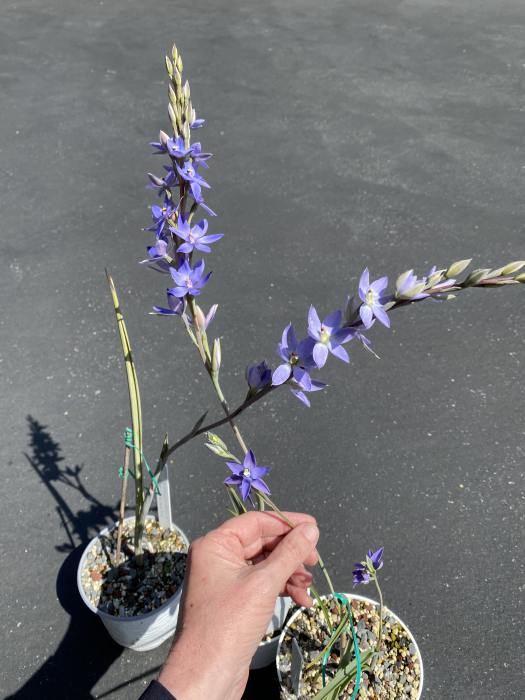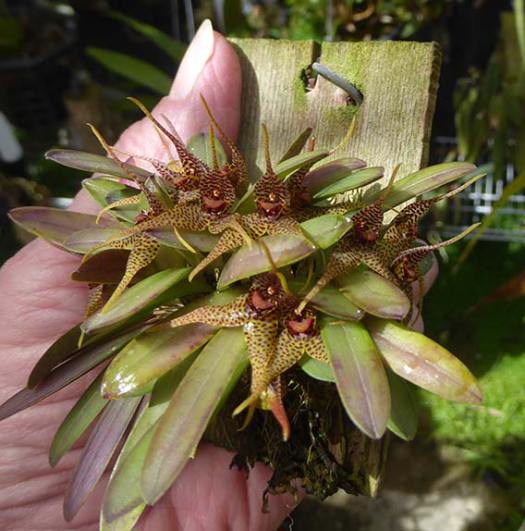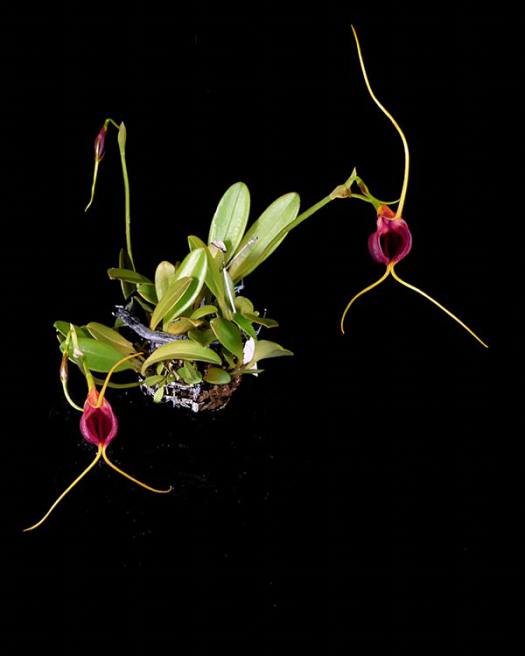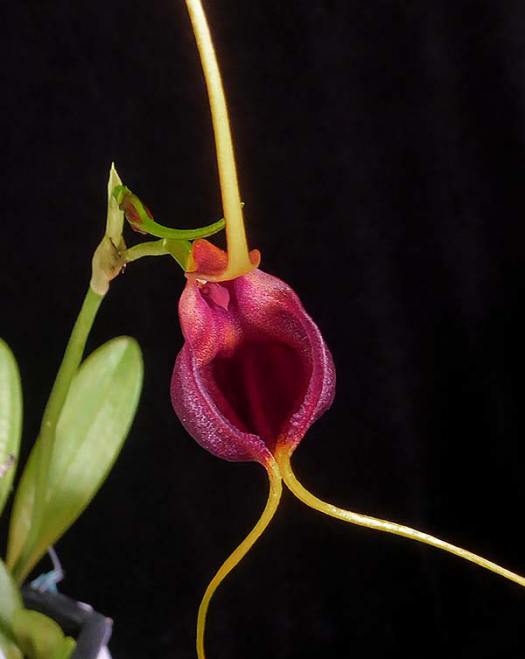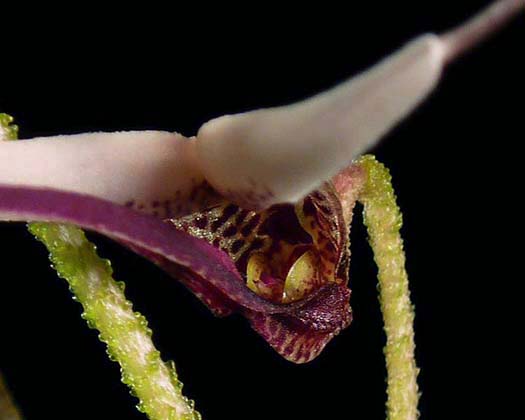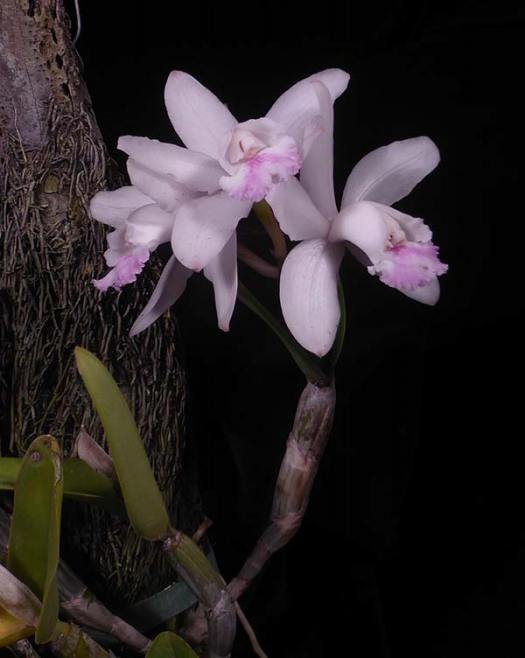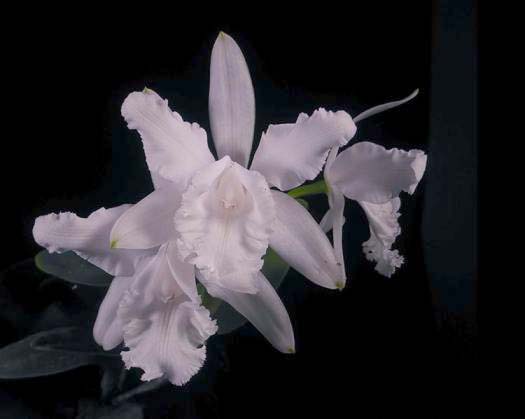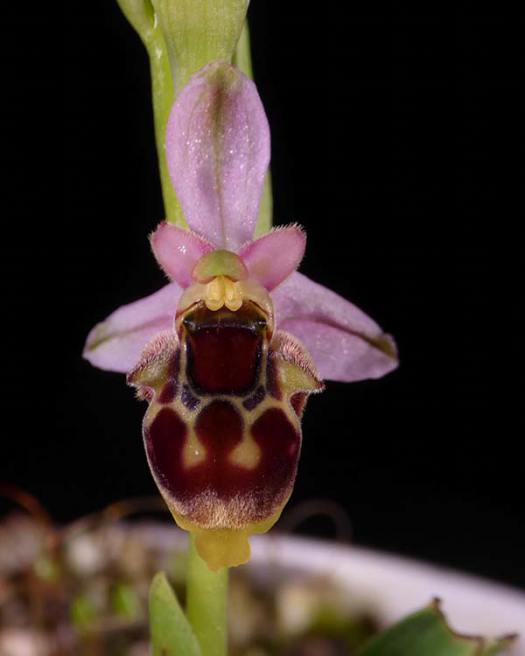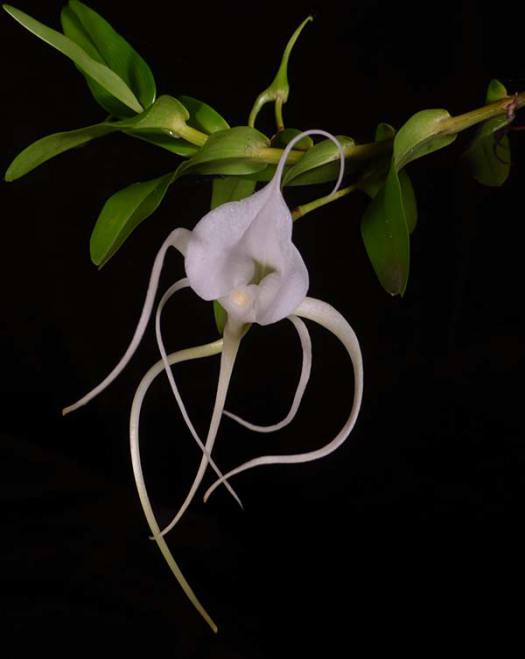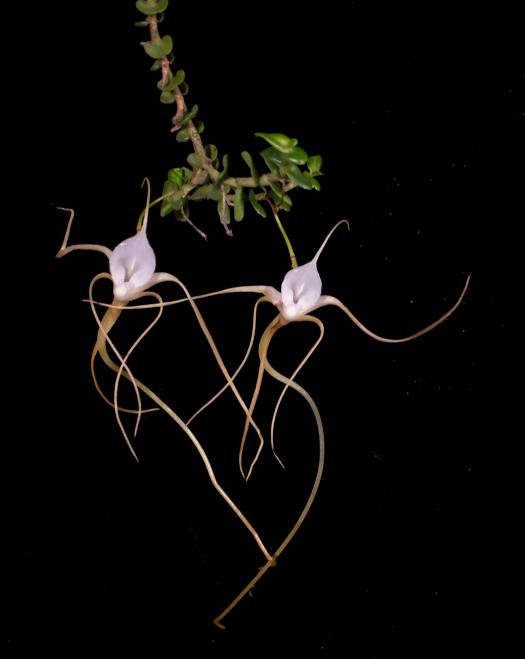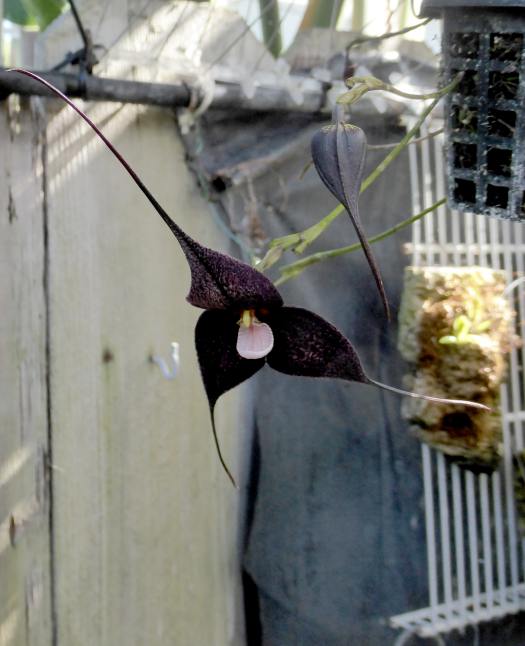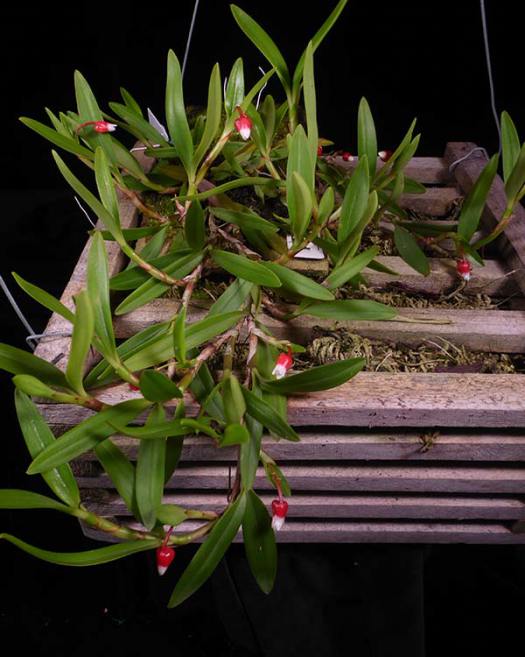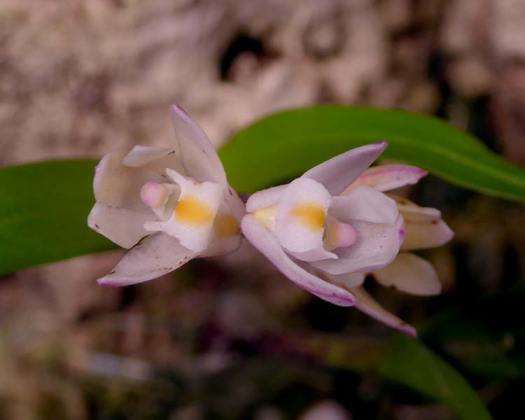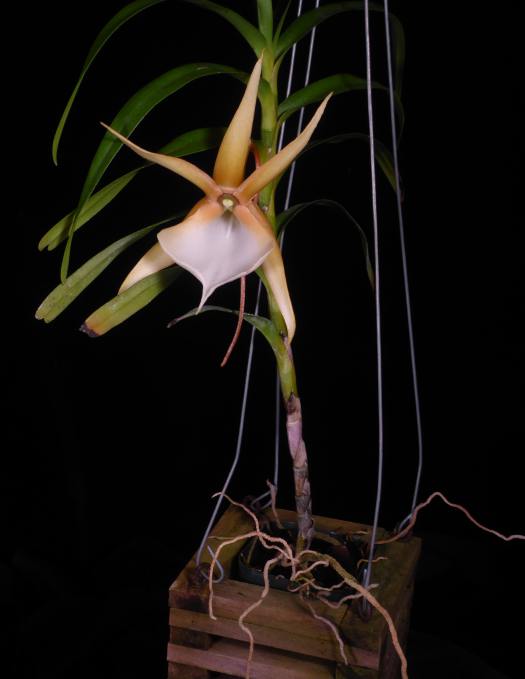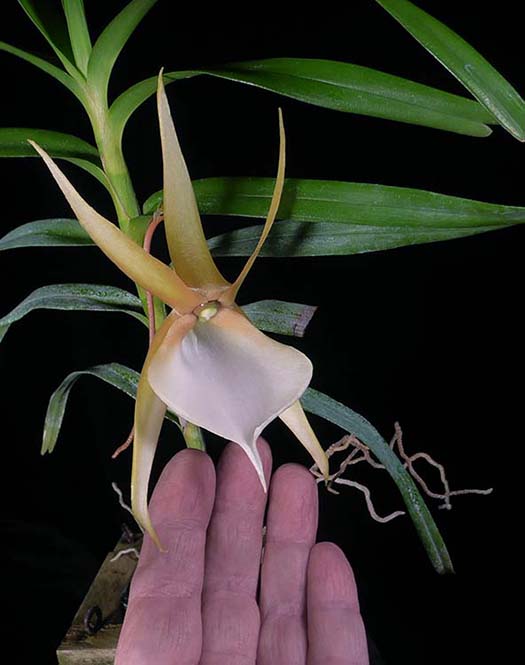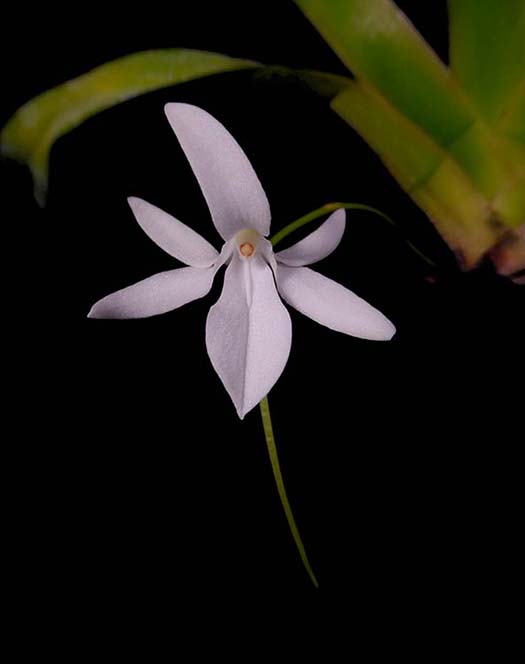May 2020
From Holly Hillman:
|
|
Leptotes bicolorHere is the happy little Leptotes bicolor that I bought from Peter Lin in 2014. It bloomed for me in April 2016,2017,2018 & yesterday. Don't know what happened last year! This is one of my very small triumphs. My patio is keeping me sane these days. |
|
From Jan Anderson:All grow in intermediate to warm temps in greenhouse with 50 % Aluminet shading. |
|
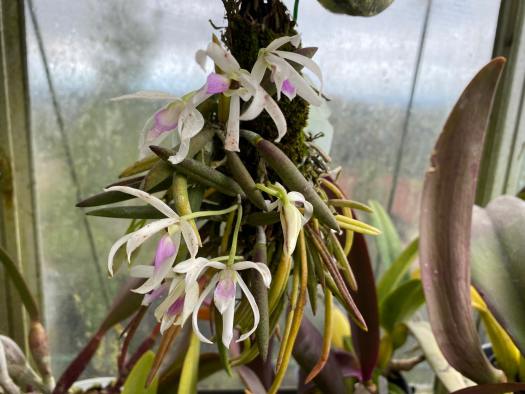 Leptotes bicolor |
|
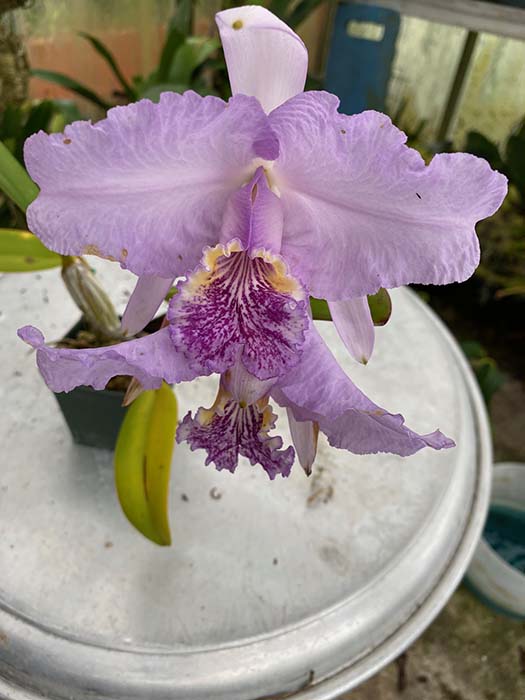 Cattleya lueddemanniana |
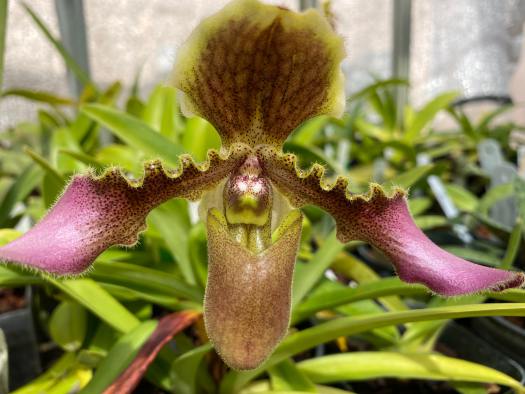 Paphiopedilum hirsutissimum |
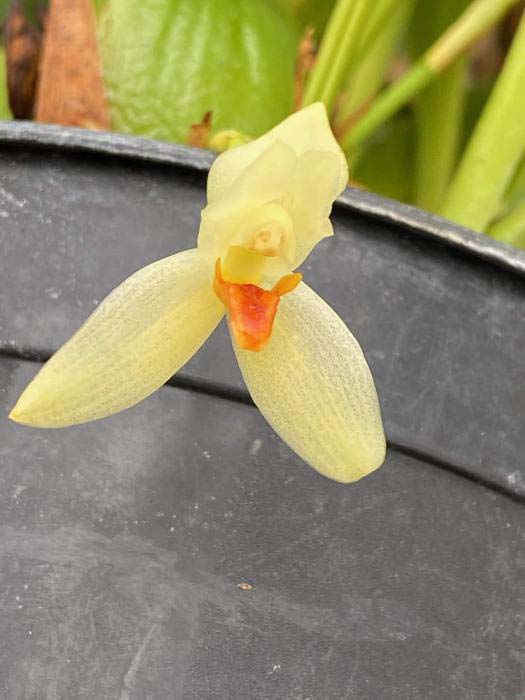 |
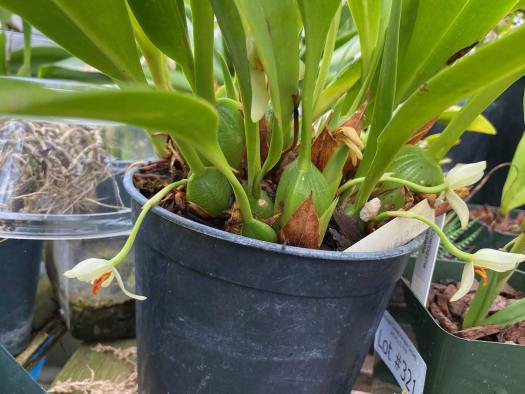 Maxillaria hedwigae |
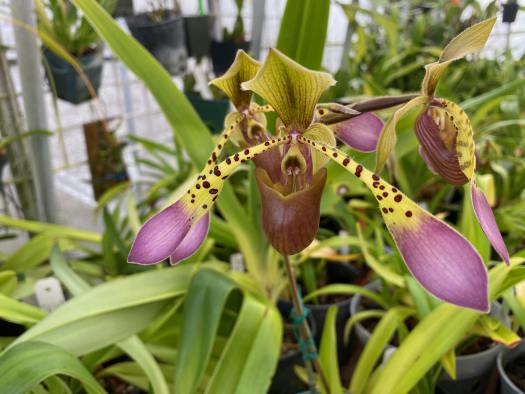 |
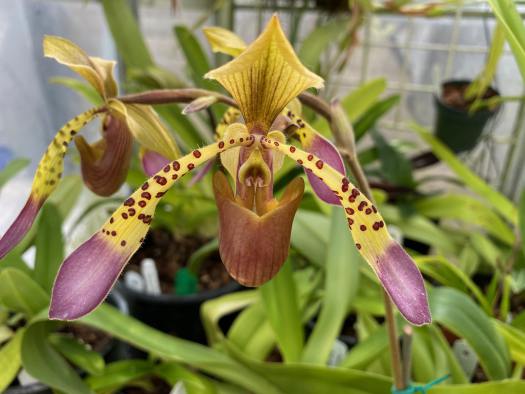 |
Paphiopedilum lowii |
|
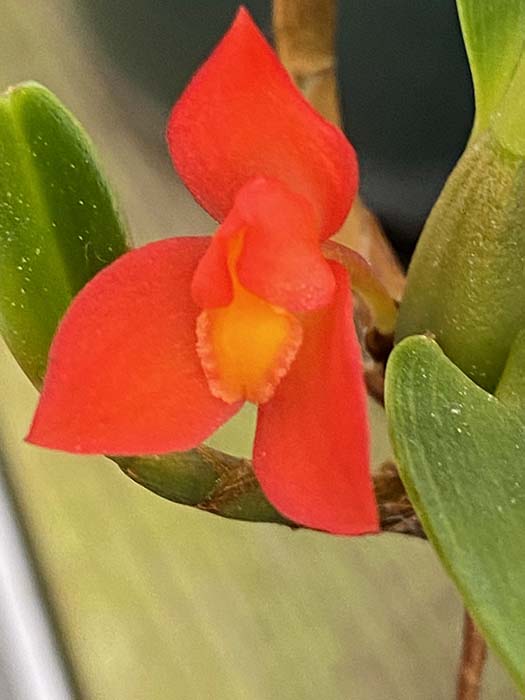 |
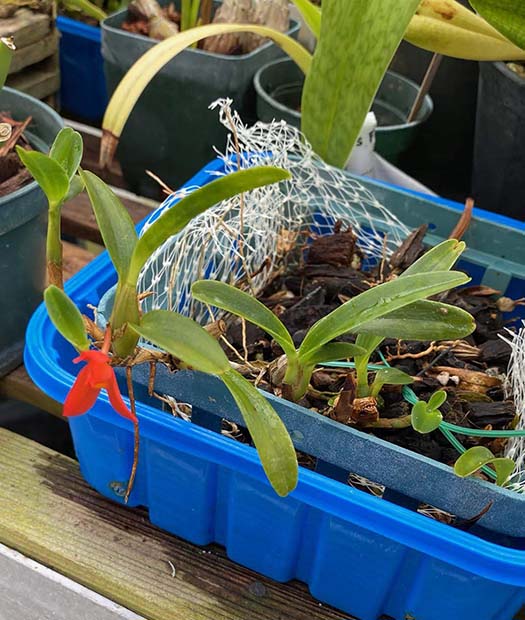 Maxillaria sophronitis |
 |
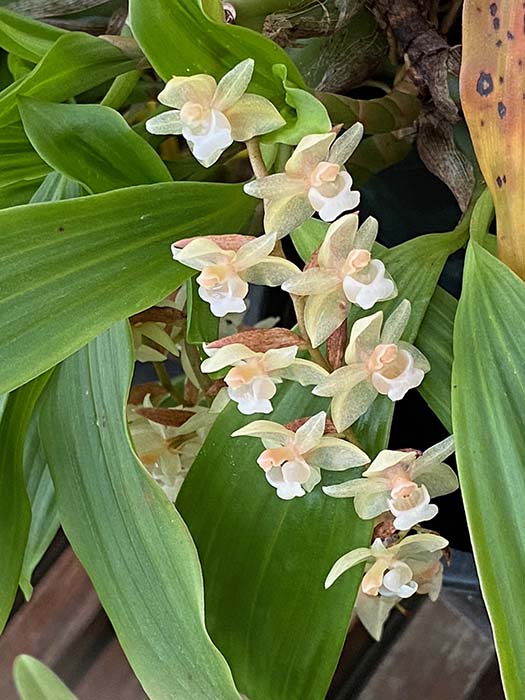 |
Pholidota chinensis |
|
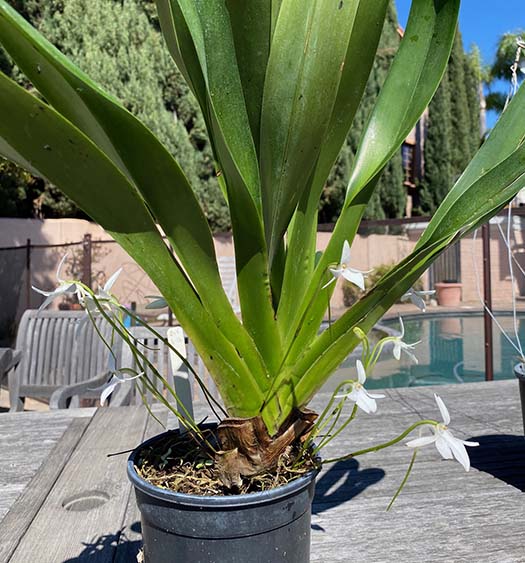 |
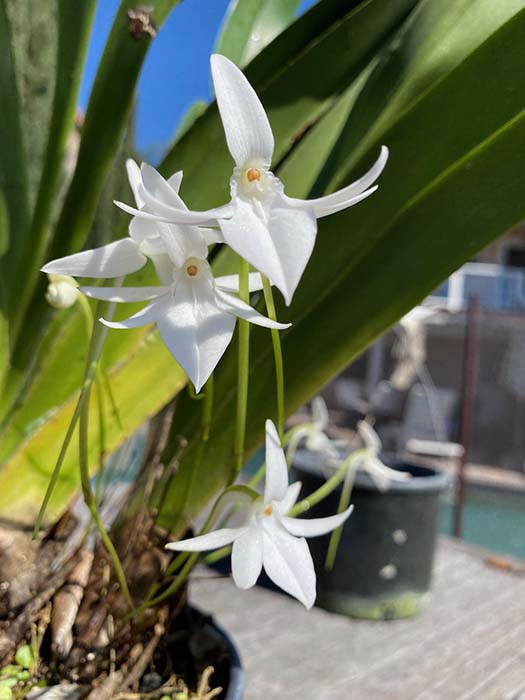 |
Jumellea sagittata (Syn. Jumellea arachnantha)This species won best fragrance at a world orchid conference I attended, which prompted me to buy a plant when I returned home. I think the WOC was the first one I went to— in Glasgow Scotland. I’ve had this plant a long time. It grows in the greenhouse with Vandas- fairly humid with 50% shade cloth. It is on the cement floor rather than hanging high up. |
|
From Don Goss:All of these came out of the greenhouse which essentially converts to a shade house when the overnight lows don’t go below 60°. At that point, I remove a 12’ x 8’ side of the greenhouse. I live in Redondo Beach at about a 20 minute stroll to the water’s edge. They are watered with RO with Grow More 20-10-20 with a PPM of 500-550 resulting in a PH of 6-6.5 depending upon how inaccurately I measure the fertilizer. My tap water is at 850 PPM with a PH of 7.2, awful, so not much room to even add any fertilizer to that. No time for my usual “studio shots”. These were all handheld photos on the patio, on the picnic table under the umbrella. |
|
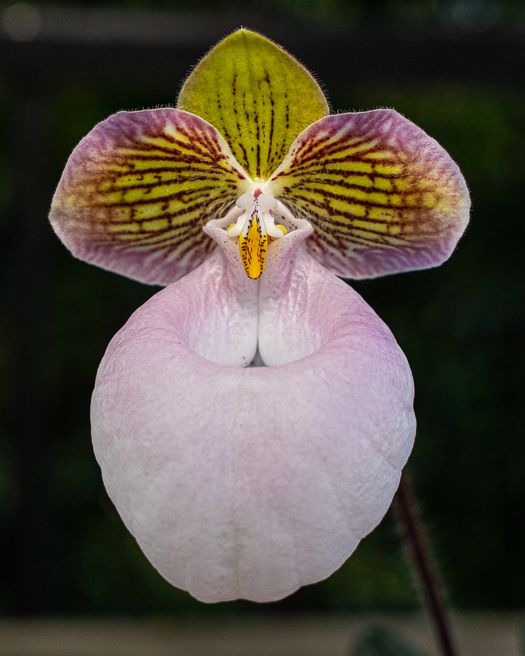 Paphiopedilum micranthum |
|
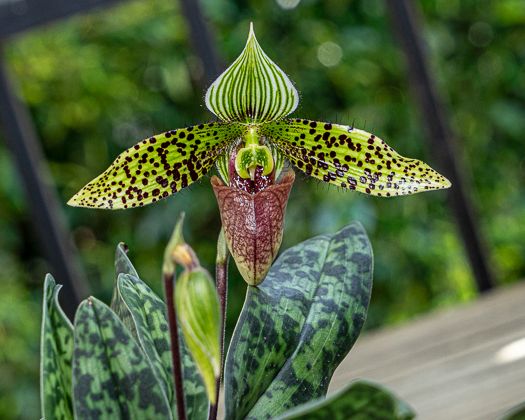 Paphipedilum sukhakulii |
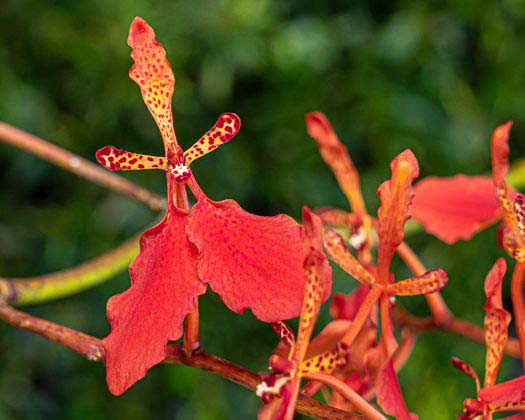 Renanthera imschootiana |
From Scott McGregor:
|
|
Appendicula malindangensisA new species for me, blooming for the first time. I bought it as a “blue” orchid, but requires a little imagination to see the blue. Species from the Philippines with small flowers on the end of long, thin canes with alternating fine leaves. Probably better if grown into a big specimen. |
|
Cynorkis lowianaA mini but brightly colored terrestrial from Madagascar. Deciduous, grows in sphagnum, and can be left outside over the winter if kept on the dry side. Easier to grow than Habenaria. |
|
Diplocaulobium aratriferumThese Dendrobium relatives are worthwhile to grow despite their short-lived (less than a day) flowers. The spider-like flowers open in the morning pure white, progress to pink towards the end of the day (as shown) and then close with dark red sepals. They are fragrant with a distinct watermelon scent. I now have two of this species that came from different vendors and are in different locations in the shade house yet always manage to flush bloom exactly the same day and hour! This is a mystery to me—I can’t correlate any environmental conditions—Marni Turkel suggested it might be barometric pressure but there has been little to no variation for the last few days. Oh well, must be plant ESP! |
|
Mediocalcar pygmaeumThis species may be small, but it grows quickly into a specimen and even without the candy-corn flowers, it is an attractive plant.
|
|
Holcoglossum flavescensThis mini has been sulking for the last few years, but seems to have cheered up and flowered for me. |
|
Pleurothallis grobyiI’m used to this mini flush-blooming but this year it has been confused and has been flowering at about 25% since January (left). Contrast that with a pic of the same plant from a few years ago (above). |
|
Restrepia cupreaPretty species with copper-colored flowers. This species seems to get crispy leaf tips more than my others, but grows well and blooms profusely for many months, so seems happy enough. |
Thelymitra dentata x glaucophylla 'Striped'Pretty flowers with a “coerulea” background but decently blue stripes! |
Orchis italicaNow more fully open & fragrant! |
|
Thelymitra glaucophylla (nuda) 'Royal Blue'A sunny day, so Thely’s are open, and this one is a species! |
|
Mediocalcar bifolium 'San Diego Zoo'A nice color alternative to the orange & yellow Mediocalcar species (decoratum, pygmaeum), although not as floriferous. See M. versteegii for comparison—the flowers seem nearly identical to me, but the growth habit on this one is more compact and neater. |
|
Mediocalcar versteegiiCompare with M. bifolium. |
|
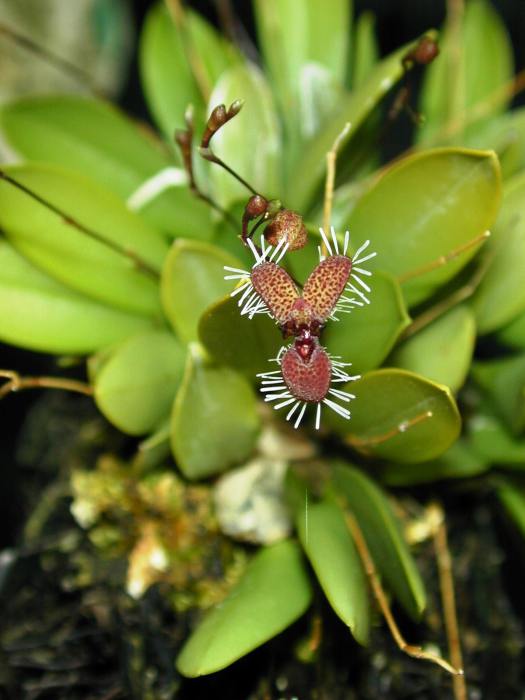 |
Pleurothallis ornata (schiedei)This was my first Pleurothallis—I find the small flowers fascinating, with tiny white flags at the sepal tips that flutter (and get tangled) in the slightest breeze. It is a real challenge to photograph well, as the flowers are small, any slight breeze distorts the flags, and you have to persuade your camera (an iPhone in this case) not to focus on the leaves. The first two pics are a current flower, and the third is a perfect flower, newly opened on a completely still morning that I took about 20 years ago, with a Nikon Coolpix camera, and now on orchidspecies.com. |
From Roberta Fox:
|
|
Outside in the Back Yard: |
|
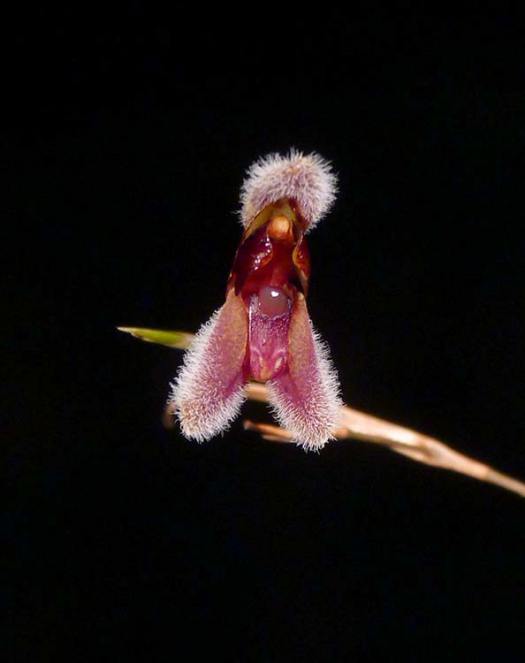 |
|
Dryadella zebrinaLots of flower power on a tiny plant. The flowers are also quite long lasting. |
Condylago (Stelis) rodrigoiLike many Pleurothallids, this one blooms sequentially on the same spikes. Flowers are about 1/2 inch. I do love fuzzy... |
|
|
Masdevallia trochilusFlowers have heavy substance. A given spike produces several flowers sequentially, and may even bloom from the same spike the following year. So if the spike is green, don't even think about cutting it, even if it hasn't done anything for awhile! |
|
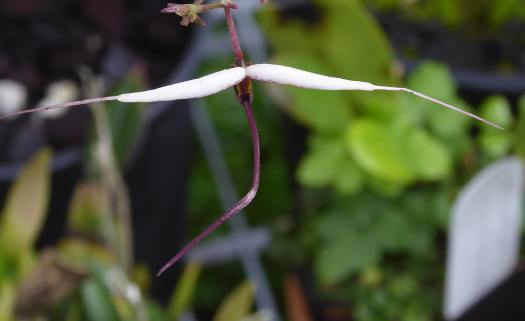
Scaphosepalum gibberosumA really large flower for the genus - about 3 inches wide,the lip around 2 inches. It looks like a bird in flight, on an impossibly thin, wiry spike. It is a sequential bloomer - individual flowers don't last long but a spike can bloom many times. |
|
Trichopilia tortilisThis plant is blooming for the first time in several years. I have had less-than-stellar results with several members of this genus. I'm getting blooms on other species that haven't done much in the last few years, and I wonder if it's weather - after several years of really hot summers, last summer was relatively cool. For Trichopilia in particular, people with warm conditions consider them "cool" and I've wondered if they want "warmer" though they haven't done well in the greenhouse at all. I think they just want the Goldilocks zone - not too cold, but not too warm either. |
|
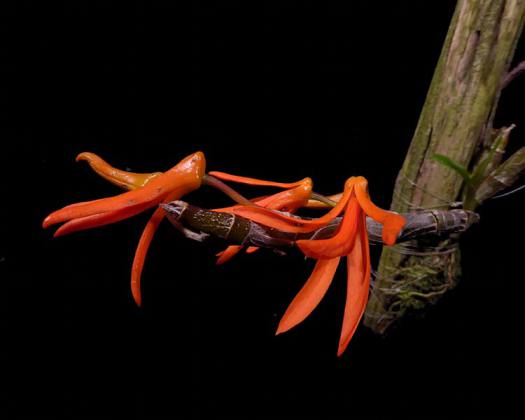
Dendrobium dickasoniiTotally deciduous in winter, it is just starting new growth. I don't particularly dry it out, but being mounted it dries quickly after watering and that seems be sufficient even in winter chill. |
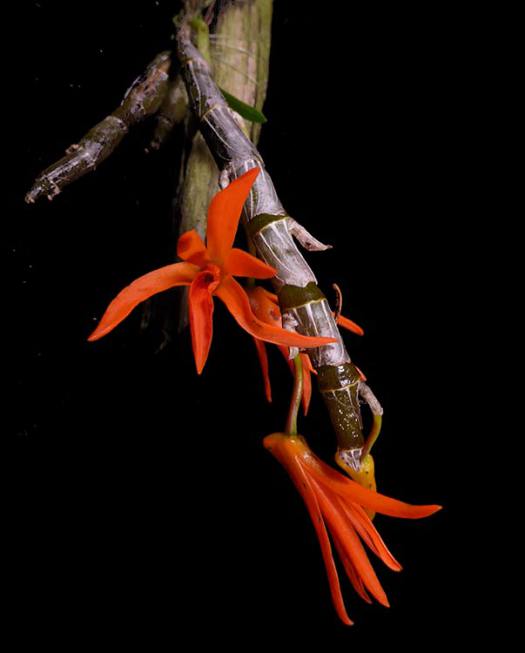 |
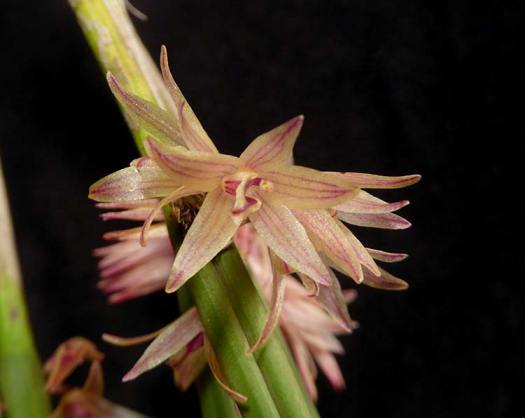 Octomeria praestansI have not been able to find elevation data on this Brazillian species, from Espirito Santo state, but it grows outside well so must come from a somewhat mountainous area. It blooms several times a year, with flowers growing from the same point at the baske of the leaves each time. |
|
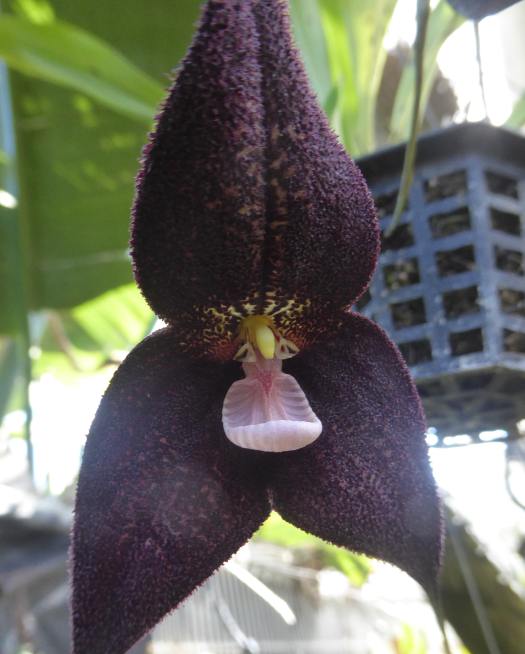 |
|
Dracula roezliiBlooms several times on a spike, and multiple times during the year, I have shown "studio shots" of this one, these photos are au naturel, the view that I get when I go out in the morning with cup of coffee in hand. As the day warms up, the flower collapses, to open wide again the next morning. |
|
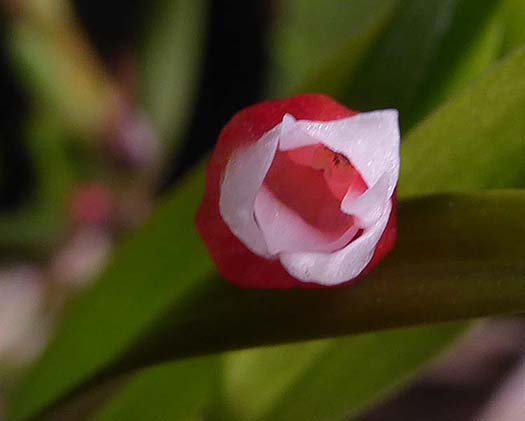 Mediocalcar versteegiiThis one is a rambler, aready growing off the mount. I placed the mount horizontally, on an inverted wood basket with some moss held in place with mesh, to provide moisture. My goal is for the plant to cover the basket, to form a mat. It grows fast, so I don't think that it will take more than a couple of years. |
|
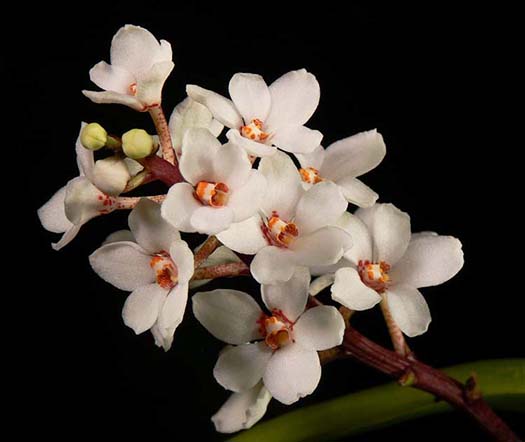
Sarcochilus hartmanniiNow we know it is spring! Sarcochilus are popping out all over. Grows in bright shade, damp but not overly wet. |
|
In the greenhouse... |
|
Angraecum viguieriIt is possible that this species could grow cooler, but it is doing so well in the greenhouse, that's where it's going to stay. Along with the big flower with interesting colors, I love the wild, warty roots. Having been told that this species hates to have its roots disturbed, I left in in the original 2 inch pot and just cut the sides so that roots could escape. They can stay in the pot if they want, or attach to the basket if they want, but clearly they mostly prefer to grow in the air. |
|
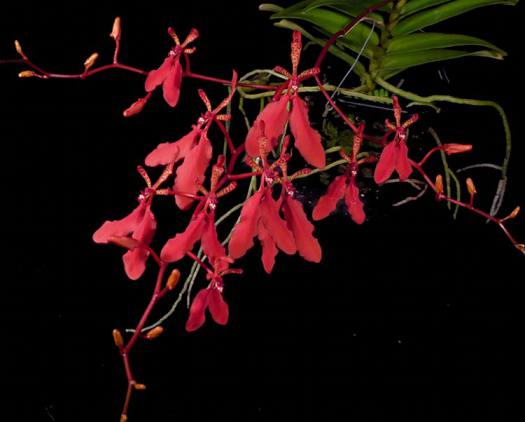 Renanthera matutinaIt looks a lot like Ren. imschootiana, but needs to be warmer based on my research. (I grow Ren. imschootiana outsided) |
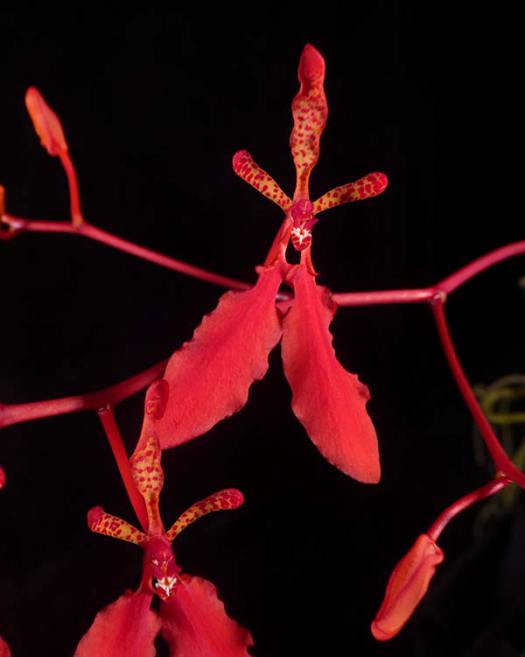 |
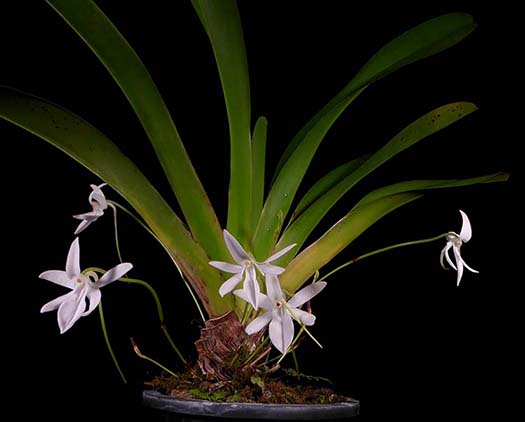
Jumellea arachnanthaThis native of Madagascar and the Comoros needs tropical conditions. It is sweetly fragrant at night. |
|
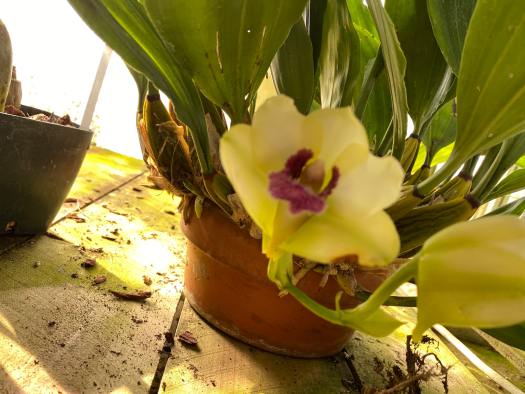
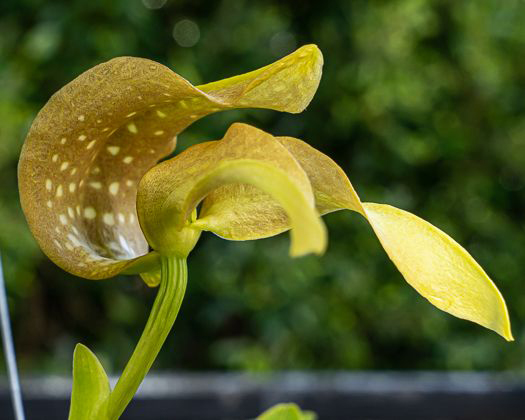
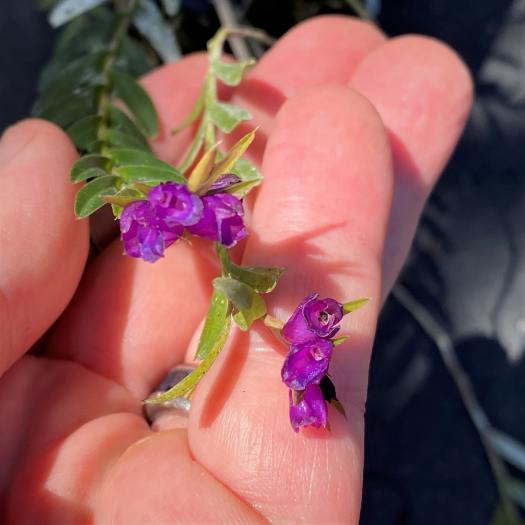
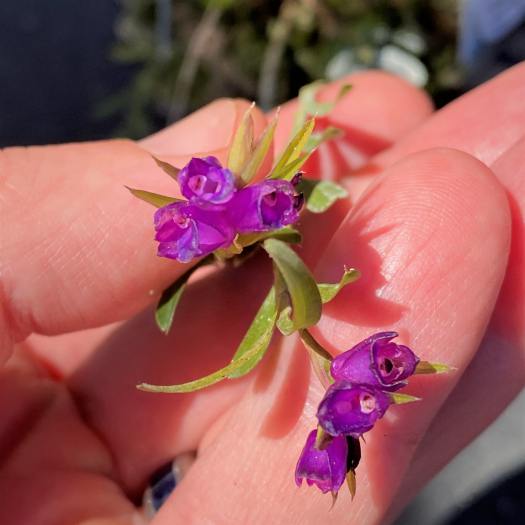
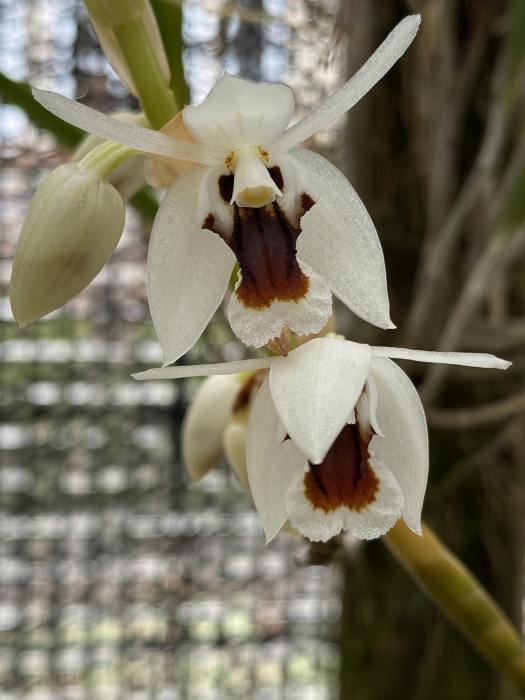
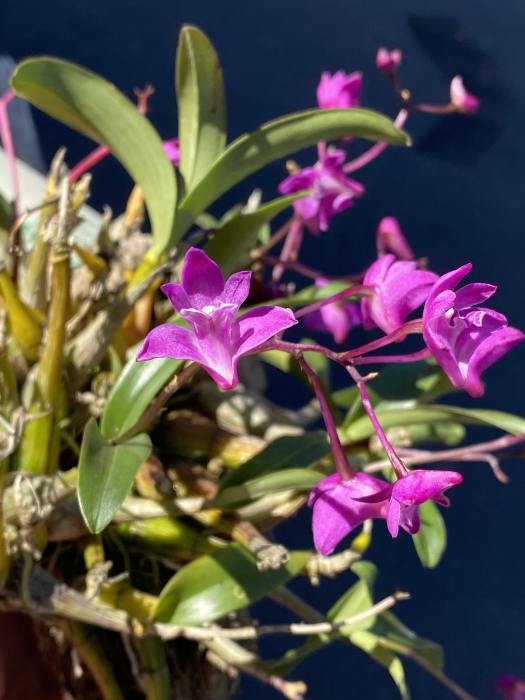
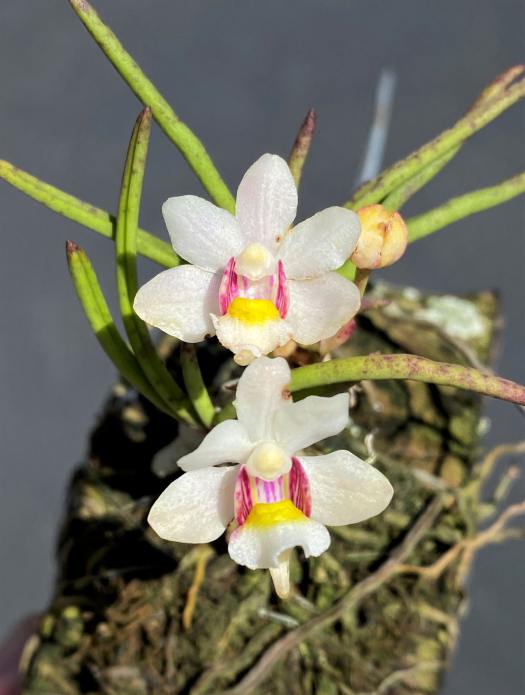
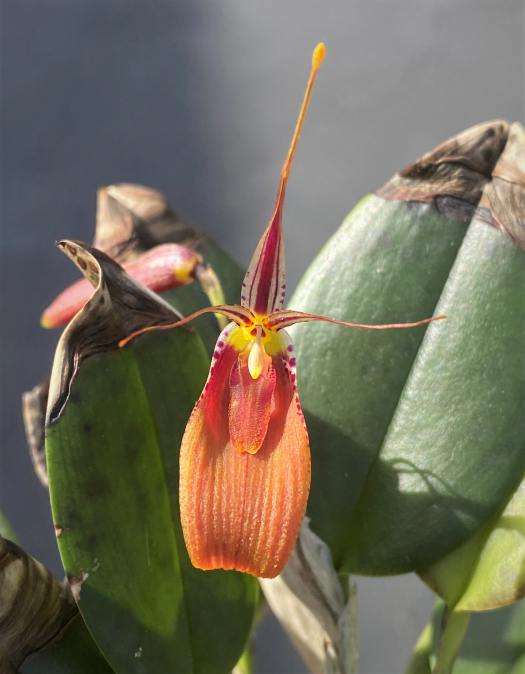
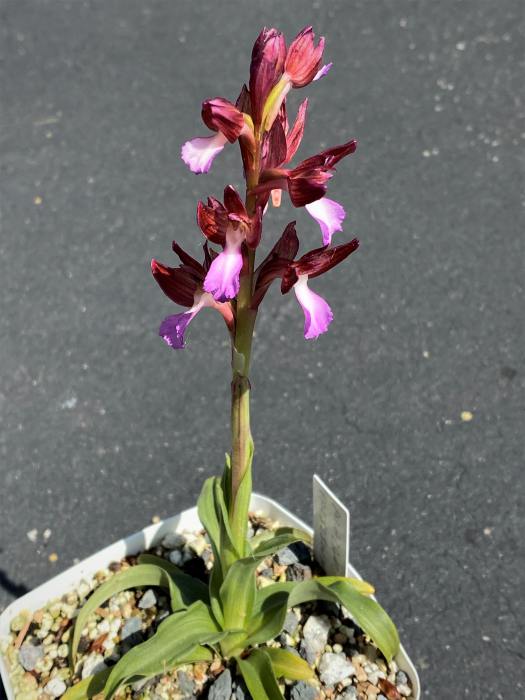
.jpg)
